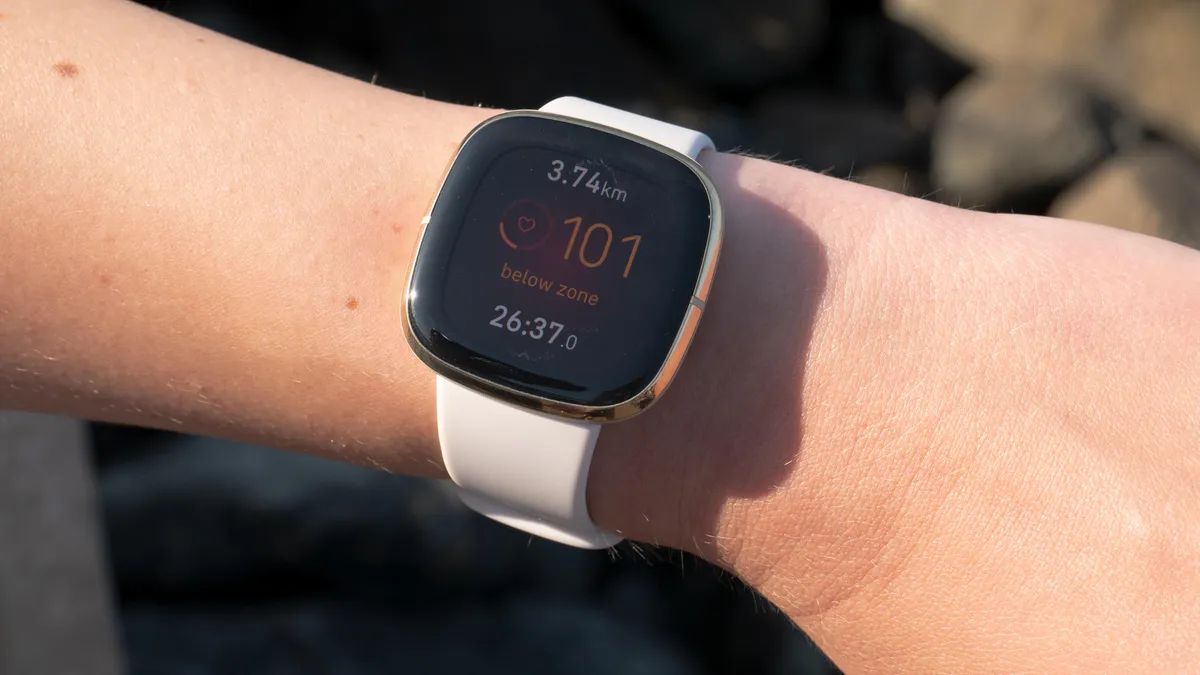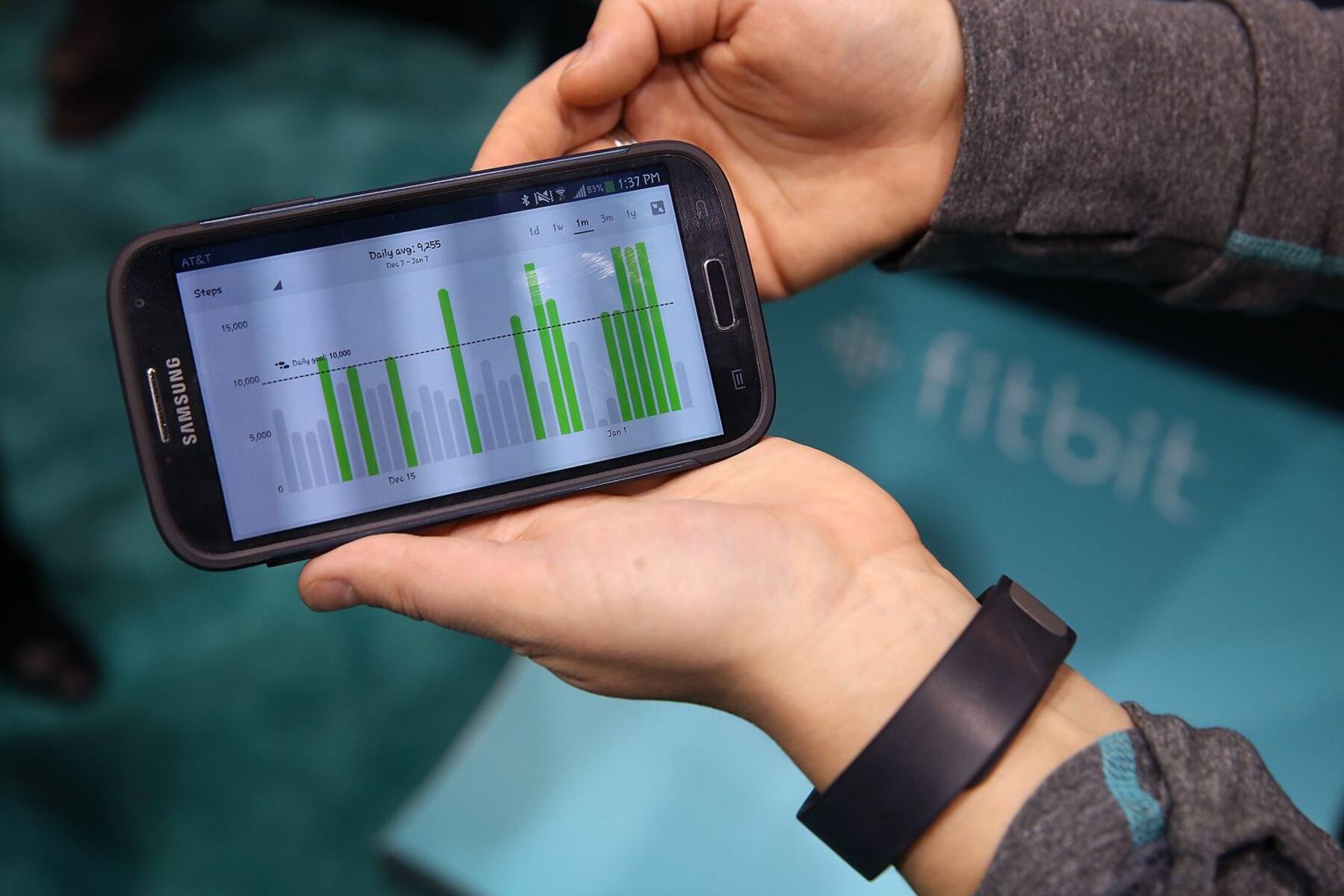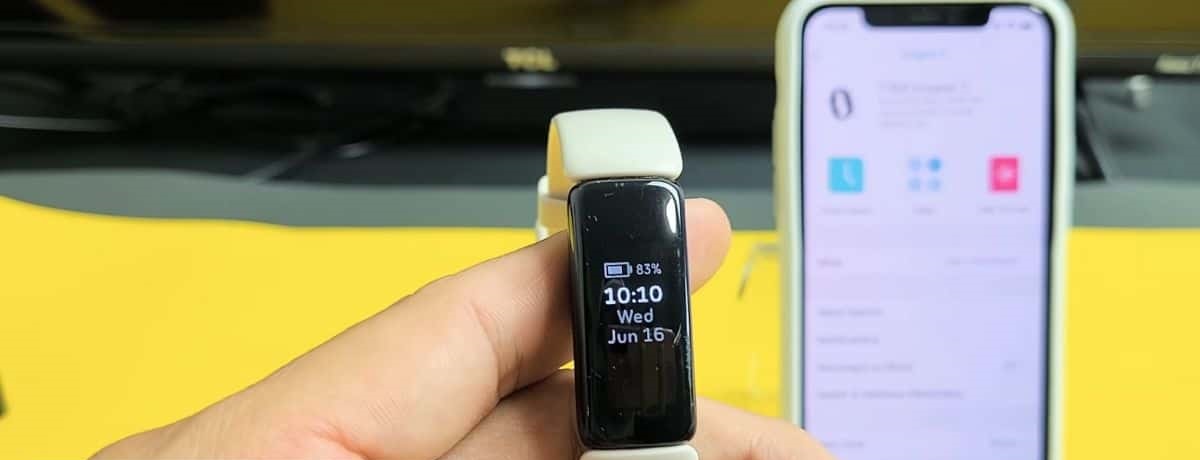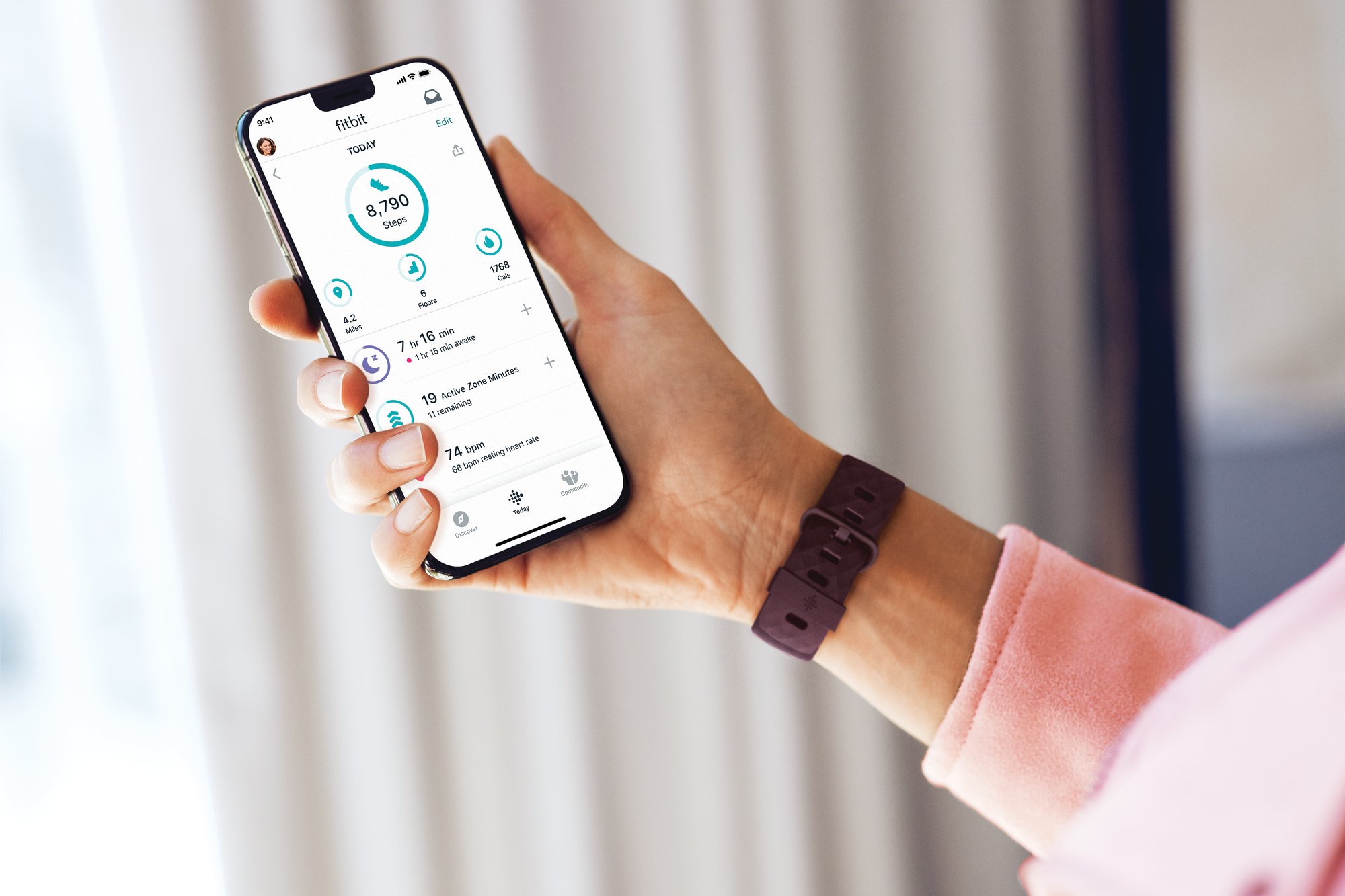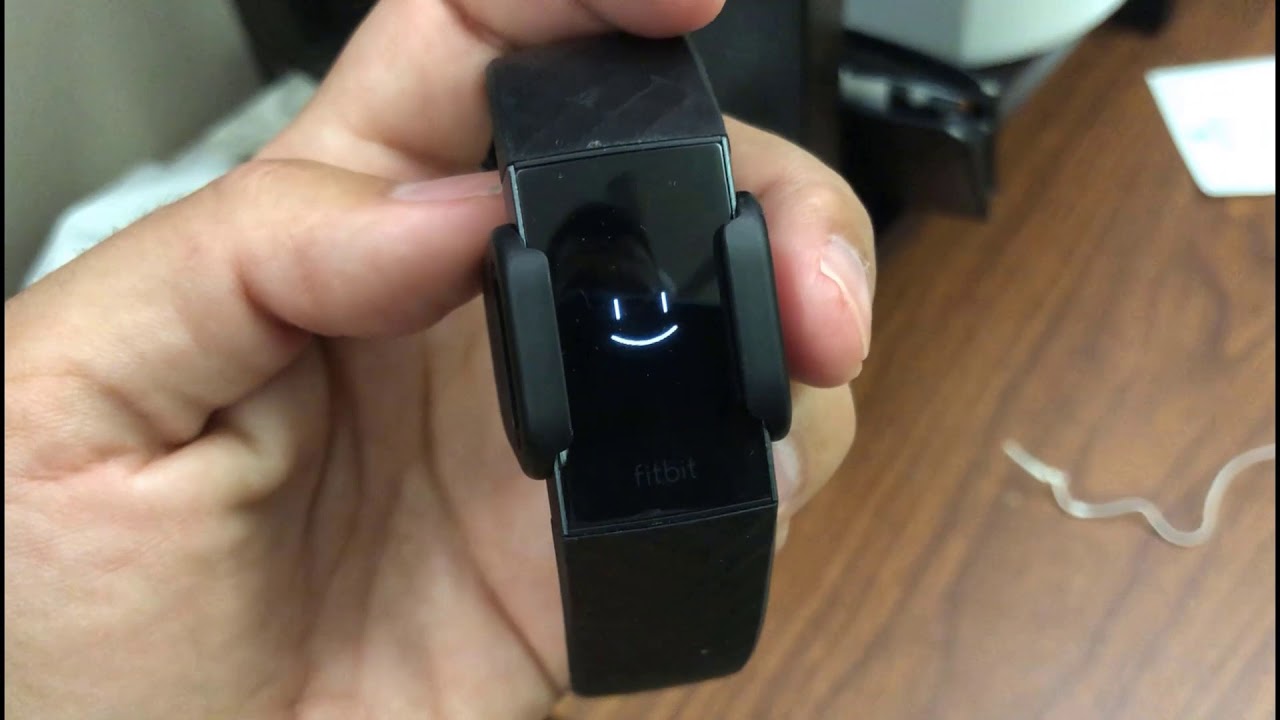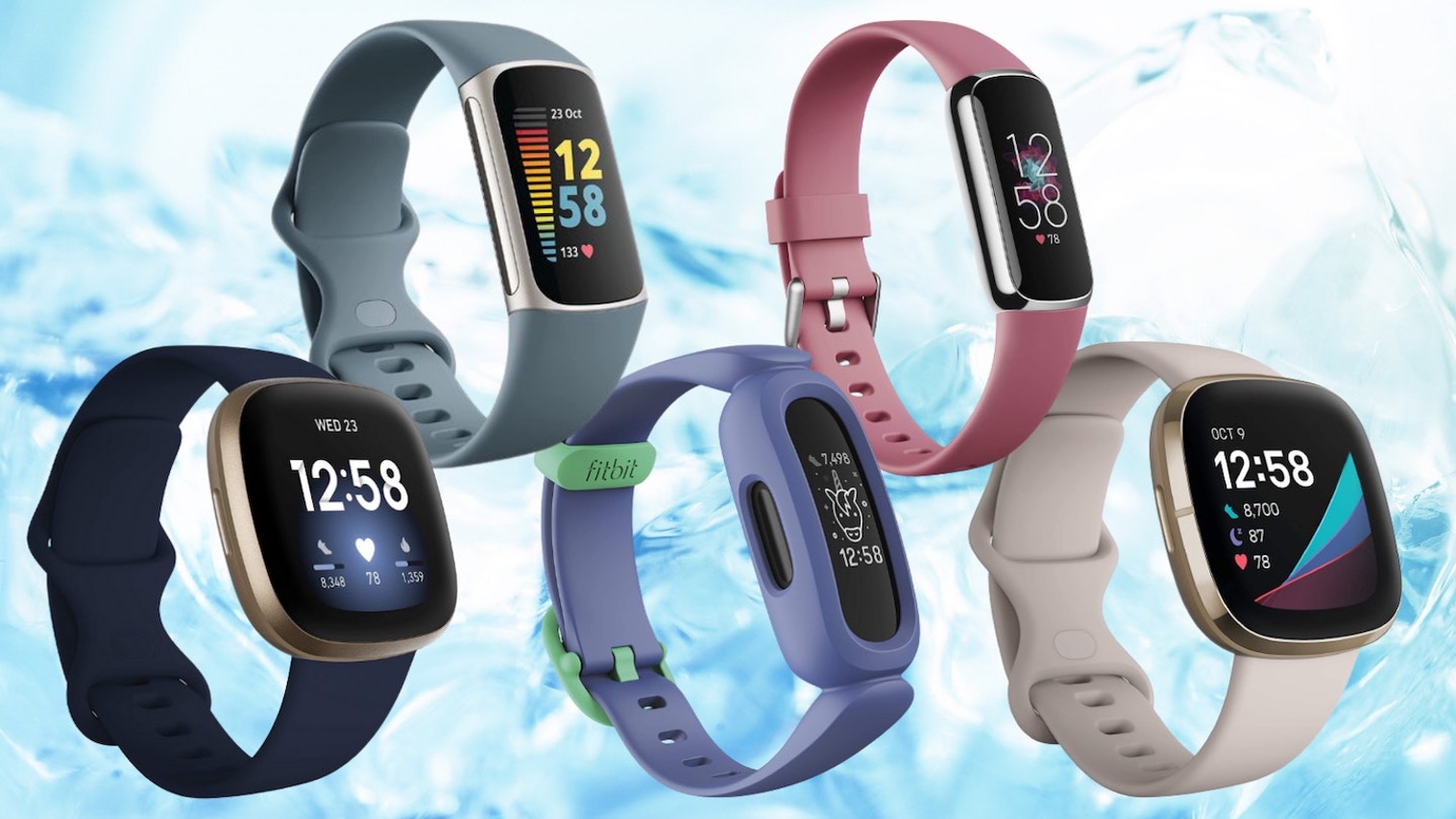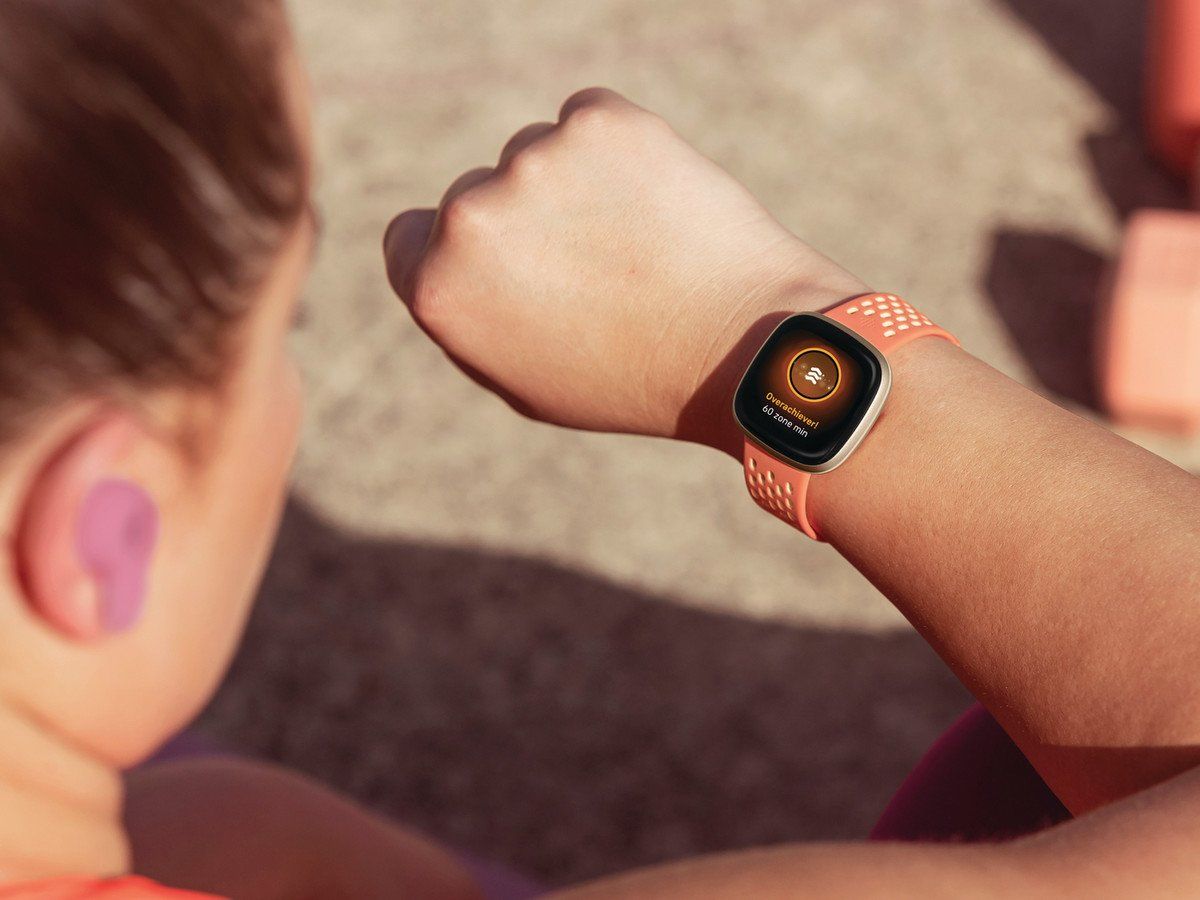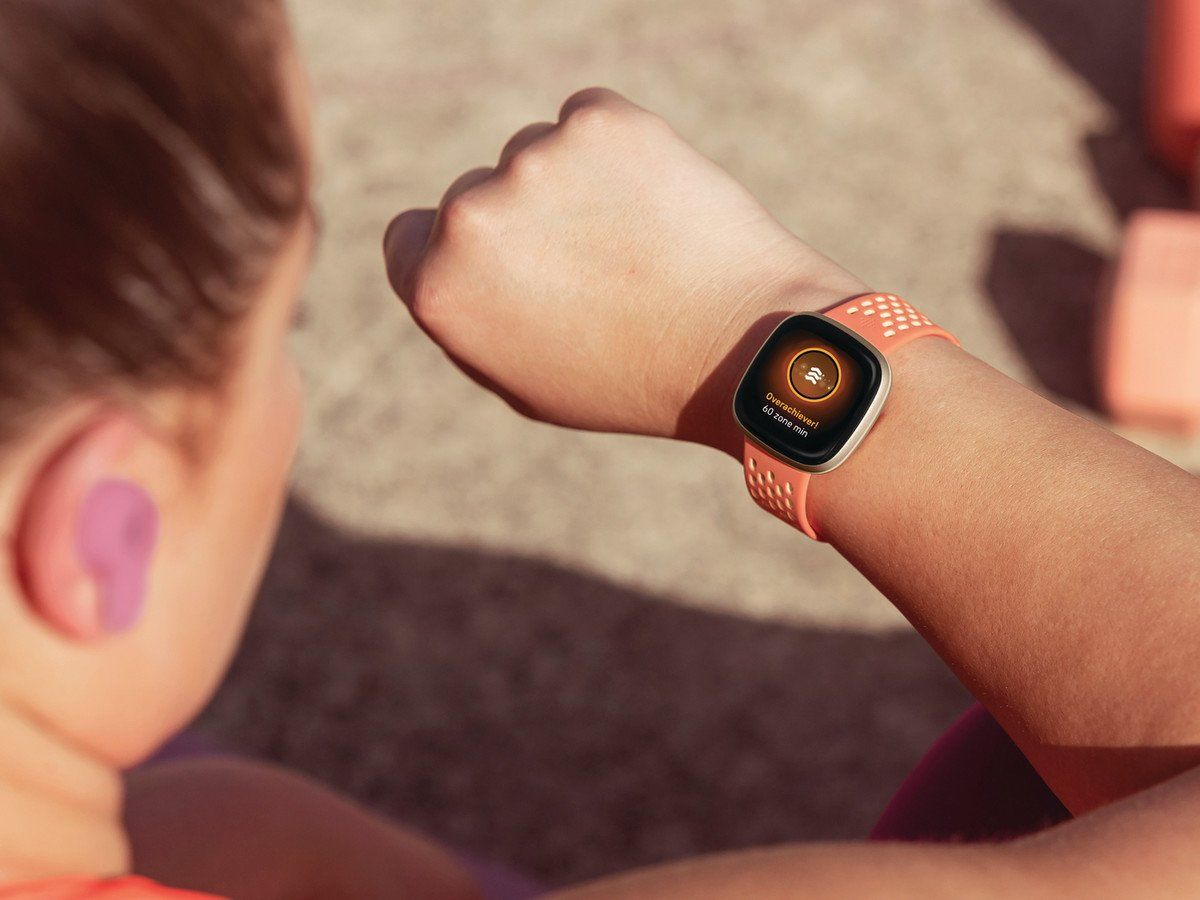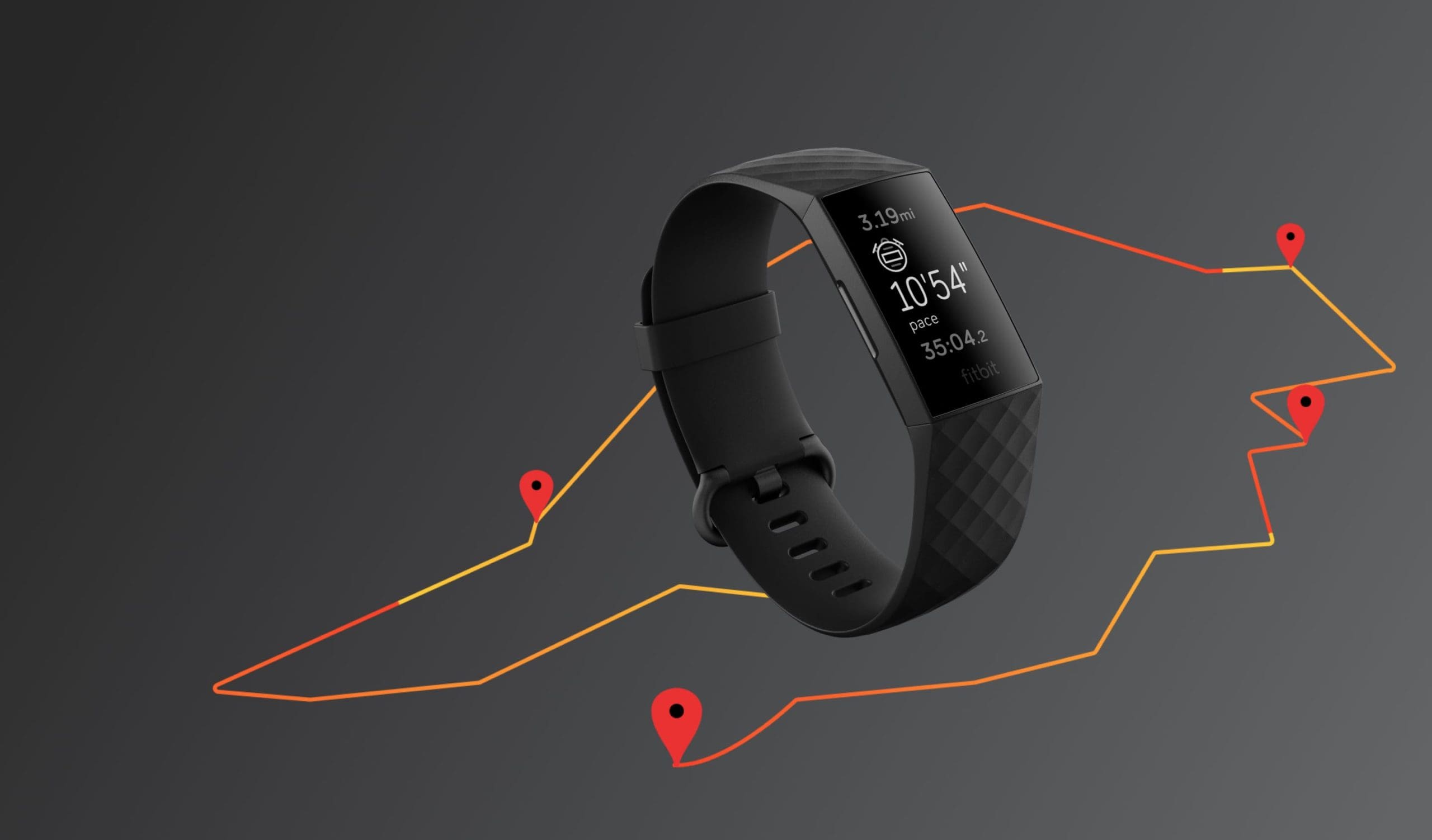Common Reasons Why Your Fitbit May Not Connect to Bluetooth
Fitbit is a popular fitness tracker that connects to your mobile device via Bluetooth, allowing you to track your activity, monitor your heart rate, and receive notifications. However, there are instances where you may encounter issues with your Fitbit not connecting to Bluetooth. Understanding the common reasons behind this problem can help you troubleshoot and resolve the issue more effectively. Here are some common reasons why your Fitbit may not connect to Bluetooth:
- Bluetooth Compatibility: Ensure that your Fitbit device is compatible with your mobile device’s Bluetooth version. Older Fitbit models may not be compatible with the latest Bluetooth technology, resulting in connectivity issues.
- Bluetooth Interference: Other Bluetooth devices or wireless signals in close proximity can interfere with the connection between your Fitbit and mobile device. Move away from other Bluetooth devices or Wi-Fi routers to establish a more stable connection.
- Low Battery: Ensure that both your Fitbit device and mobile device have sufficient battery power. A low battery can disrupt the Bluetooth connection between the devices.
- Software Glitch: Like any electronic device, Fitbit may experience occasional software glitches. Restarting both your Fitbit and mobile device can often resolve these issues.
- Outdated Fitbit App: Make sure you have the latest version of the Fitbit app installed on your mobile device. Outdated app versions may have compatibility issues with the Fitbit device.
- Incorrect Bluetooth Settings: Double-check that Bluetooth is enabled on your mobile device and that it is discoverable to other devices. Additionally, ensure that your Fitbit device is in pairing mode.
- Distance from Mobile Device: Ensure that your Fitbit device is within range of your mobile device. Bluetooth has a limited range, typically around 30 feet (10 meters), so make sure your Fitbit is in close proximity to your mobile device.
- Bluetooth Cache: Clearing the Bluetooth cache on your mobile device can help resolve connectivity issues. This can be done in the settings of your mobile device under the Bluetooth section.
- Battery Optimization: Some mobile devices have battery optimization settings that may limit the performance of Bluetooth connections. Disable battery optimization for the Fitbit app to ensure a stable connection.
- Hardware or Firmware Issues: In rare cases, there might be hardware or firmware issues with your Fitbit device. If all troubleshooting steps fail, contacting Fitbit support for further assistance is recommended.
By understanding these common reasons why your Fitbit may not connect to Bluetooth, you can take the necessary steps to troubleshoot and resolve the issue. Keep in mind that the specific troubleshooting steps may vary depending on your Fitbit model and mobile device. Refer to the Fitbit website or contact Fitbit support for more detailed instructions specific to your situation.
Troubleshooting Steps to Fix the Connection Issue
If your Fitbit device is not connecting to Bluetooth, there are several troubleshooting steps you can try to resolve the issue. Follow these steps to troubleshoot and fix the connection problem:
- Restart Your Fitbit Device: Start by restarting your Fitbit device. Sometimes, a simple restart can resolve connectivity issues. To restart your Fitbit, go to the settings menu and look for the option to restart or reset the device. Once it has restarted, try reconnecting to Bluetooth.
- Check Bluetooth Settings on Your Mobile Device: Ensure that Bluetooth is enabled on your mobile device. Go to the settings menu and look for the Bluetooth option. Make sure it is turned on and set to discoverable mode. Additionally, check if there are any other connected devices that might be interfering with the Fitbit connection. Disconnect them if necessary.
- Reset Bluetooth Connection on Your Fitbit: If restarting your Fitbit and checking Bluetooth settings on your mobile device didn’t solve the problem, you can try resetting the Bluetooth connection on your Fitbit device. Head to the settings menu on your Fitbit device, find the Bluetooth option, and select “Forget” or “Remove” to delete the existing Bluetooth connection. Then, go back to your mobile device and try pairing it with your Fitbit again.
- Update Fitbit App and Firmware: Make sure you have the latest version of the Fitbit app installed on your mobile device. Outdated app versions may have compatibility issues with the Fitbit device. Additionally, check if there are any firmware updates available for your Fitbit. Updating the firmware can often solve connectivity problems.
- Ensure Your Fitbit is in Range of Your Mobile Device: Bluetooth has a limited range, so make sure your Fitbit device is within range of your mobile device. Keep them in close proximity to establish a stable connection. If you are experiencing connection issues, try moving closer to your mobile device and see if the connection improves.
- Clear Bluetooth Cache on Your Mobile Device: Sometimes, clearing the Bluetooth cache on your mobile device can help resolve connectivity issues. To do this, go to the settings menu, find the Bluetooth section, and look for the option to clear the cache. Restart your mobile device after clearing the cache and try reconnecting to your Fitbit.
- Disable Battery Optimization for the Fitbit App: Some mobile devices have battery optimization settings that may limit the performance of Bluetooth connections. To ensure a stable connection, disable battery optimization for the Fitbit app. Go to the settings menu on your mobile device, find the battery optimization section, and add the Fitbit app to the list of exceptions.
- Reset Your Fitbit to Factory Settings: If all the previous steps did not resolve the connection issue, you can try resetting your Fitbit device to factory settings. Keep in mind that this step will erase all data and settings on your Fitbit, so make sure to back up any important information. Refer to the Fitbit website or user manual for instructions on how to perform a factory reset on your specific Fitbit model.
- Contact Fitbit Support for Further Assistance: If none of the troubleshooting steps resolved the connection problem, it is recommended to contact Fitbit support for further assistance. They have dedicated support teams who can help with more advanced troubleshooting and provide solutions specific to your situation.
By following these troubleshooting steps, you should be able to fix the connection issue between your Fitbit device and Bluetooth. Remember to refer to the Fitbit website or contact Fitbit support for more detailed instructions specific to your Fitbit model.
Restarting Your Fitbit Device
Restarting your Fitbit device is one of the first troubleshooting steps you should try if you’re experiencing connectivity issues with Bluetooth. Restarting can help resolve minor software glitches and refresh the device’s connection. Here’s how you can restart your Fitbit device:
- Charge Your Fitbit: Ensure that your Fitbit device has enough battery power. If it’s low on battery, connect it to the charging cable and plug it into a power source. Let it charge for a few minutes before proceeding.
- Locate the Power Button or Pinhole: Different Fitbit models have different methods of restarting. Check the user manual or the Fitbit website to find the location of the power button or pinhole on your specific model.
- Press and Hold the Power Button: Once you’ve located the power button, press and hold it for 10 to 15 seconds. This will initiate the restart process.
- Release the Power Button: After holding the power button for the specified time, release it. Your Fitbit device will turn off and then turn back on.
- Wait for the Restart Process to Complete: Allow your Fitbit device a few seconds to restart. You may see the Fitbit logo or a battery icon on the screen during the restart process. Once the device has fully restarted, it should be ready to use again.
- Attempt to Reconnect to Bluetooth: After successfully restarting your Fitbit, try reconnecting it to Bluetooth on your mobile device. Follow the steps outlined in the manufacturer’s instructions for pairing your specific Fitbit model with your mobile device.
Restarting your Fitbit device can often fix connectivity issues by resetting the software and establishing a fresh connection with Bluetooth. If the connection problem persists after restarting, try other troubleshooting steps or contact Fitbit support for further assistance.
Checking the Bluetooth Settings on Your Mobile Device
When your Fitbit device is not connecting to Bluetooth, it’s important to check the Bluetooth settings on your mobile device to ensure everything is properly configured. Here are the steps to check and adjust the Bluetooth settings on your mobile device:
- Open the Settings Menu: Unlock your mobile device and go to the home screen. Tap on the “Settings” app to open the settings menu.
- Find the Bluetooth Option: Scroll down through the settings menu and look for the “Bluetooth” option. It is usually represented by a Bluetooth icon.
- Enable Bluetooth: Make sure that Bluetooth is enabled on your mobile device. If it is already enabled, the toggle switch next to Bluetooth should appear in the “on” position. If it is disabled, toggle the switch to turn Bluetooth on.
- Make Your Device Discoverable: Some mobile devices have an option to make your device discoverable to other devices. This setting allows your Fitbit device to detect your mobile device during the pairing process. Check if there is an option to make your device discoverable and enable it if necessary.
- Disconnect Other Bluetooth Devices: If there are any other Bluetooth devices connected to your mobile device, they might be interfering with the connection to your Fitbit device. Tap on the Bluetooth device list and disconnect any unnecessary devices by selecting the device and tapping on “Forget” or “Disconnect.”
- Put Your Fitbit Device in Pairing Mode: Make sure your Fitbit device is in pairing mode. Check the manufacturer’s instructions for your specific model on how to put it in pairing mode. This will allow your mobile device to detect and establish a connection with your Fitbit.
- Search for Your Fitbit Device: On the Bluetooth settings screen of your mobile device, tap on the option to “Search” or “Scan” for nearby devices. Your mobile device should start scanning for available devices, including your Fitbit.
- Select Your Fitbit Device: Once your Fitbit device appears in the list of available devices, tap on it to select it. Your mobile device will begin the pairing process.
- Follow the Pairing Instructions: Follow the on-screen prompts and instructions to complete the pairing process between your Fitbit and mobile device. This may involve entering a PIN or confirming a passkey on both devices.
By checking and adjusting the Bluetooth settings on your mobile device, you can ensure that it is properly configured for the connection with your Fitbit device. After making any necessary modifications, attempt to reconnect your Fitbit device to Bluetooth and see if the connection problem is resolved.
Resetting the Bluetooth Connection on Your Fitbit
If you’re experiencing connectivity issues between your Fitbit device and Bluetooth, resetting the Bluetooth connection on your Fitbit can often resolve the problem. This process involves removing the existing Bluetooth connection and establishing a fresh connection. Here’s how you can reset the Bluetooth connection on your Fitbit:
- Access the Settings Menu on Your Fitbit: Navigate to the settings menu on your Fitbit device. The exact method may vary depending on the Fitbit model you have. Refer to the manufacturer’s instructions or user manual for guidance.
- Find the Bluetooth Option: Once in the settings menu, locate the option for Bluetooth. It is usually listed under the connectivity or device settings.
- Select “Forget” or “Remove”: Tap on the Bluetooth option and look for the option to “Forget” or “Remove” the existing Bluetooth connection. This will remove the current connection between your Fitbit and your mobile device.
- Restart Your Fitbit: After removing the Bluetooth connection, restart your Fitbit device. This can be done by following the restarting instructions specific to your Fitbit model. Restarting helps refresh the device and prepare it for a new Bluetooth connection.
- Put Your Fitbit Device in Pairing Mode: Once your Fitbit has restarted, put it in pairing mode. Refer to the Fitbit instructions or user manual to find the steps for your specific model. This initiates the process of establishing a new Bluetooth connection.
- Open Bluetooth Settings on Your Mobile Device: On your mobile device, go to the settings menu and access the Bluetooth settings. Make sure Bluetooth is turned on and set to discoverable mode.
- Search for Nearby Devices: In the Bluetooth settings of your mobile device, initiate a search for nearby devices. Your Fitbit device should appear in the list of available devices.
- Select Your Fitbit Device: Once your Fitbit device appears in the list, tap on it to select it. Your mobile device will then begin the process of pairing with your Fitbit.
- Follow the Pairing Instructions: Follow the on-screen instructions to pair your Fitbit device with your mobile device. This may involve entering a PIN or confirming a passkey on both devices.
By resetting the Bluetooth connection on your Fitbit, you are essentially starting fresh and giving your devices a chance to establish a new, stable connection. After completing the reset process, attempt to reconnect your Fitbit to Bluetooth and see if the connection issue is resolved.
Updating the Fitbit App and Firmware
Ensuring that you have the latest version of the Fitbit app installed on your mobile device and updating the firmware on your Fitbit device can often resolve connectivity issues. Here are the steps to update the Fitbit app and firmware:
- Check for App Updates: Open the app store on your mobile device (such as the Apple App Store or Google Play Store) and search for “Fitbit.” If there is an update available for the Fitbit app, tap on the “Update” button to install the latest version. Updating the app can help resolve any compatibility issues with your Fitbit device.
- Connect Your Fitbit Device: Make sure your Fitbit device is properly connected to your mobile device via Bluetooth. Open the Fitbit app and go to the device section to confirm the connection.
- Check for Firmware Updates: Once your Fitbit device is connected to the app, check for firmware updates. In the device section of the Fitbit app, there is usually an option to check for updates. Follow the prompts to download and install any available firmware updates for your Fitbit device. These updates can often improve the device’s performance and resolve connectivity issues.
- Keep Your Fitbit and Mobile Device Close: During the update process, keep your Fitbit device in close proximity to your mobile device. This ensures a stable Bluetooth connection and allows for a smooth update.
- Wait for the Update to Complete: The update process may take a few minutes. Be patient and wait for the update to complete. Avoid interrupting the process by closing the app or turning off your mobile device.
- Restart Your Fitbit Device: After the update is complete, restart your Fitbit device. This helps apply the firmware changes and ensures that the updates take effect.
- Reconnect Your Fitbit to Bluetooth: Once your Fitbit device has restarted, try reconnecting it to Bluetooth on your mobile device. Follow the pairing steps outlined in the manufacturer’s instructions to establish a stable connection.
By keeping the Fitbit app and firmware up to date, you can benefit from the latest features and improvements while minimizing connectivity issues. Regularly check for updates and ensure that both the Fitbit app and firmware are current on your devices.
Ensuring Your Fitbit is in Range of Your Mobile Device
One of the common reasons why your Fitbit may not connect to Bluetooth is because it is out of range of your mobile device. Bluetooth has a limited range, typically around 30 feet (10 meters), so it’s important to ensure that your Fitbit and mobile device are within range of each other. Here are some steps to ensure that your Fitbit is in range of your mobile device:
- Keep Your Fitbit and Mobile Device Close: When trying to establish a connection, make sure that your Fitbit device is physically close to your mobile device. Bring them within a close proximity to ensure a strong Bluetooth signal.
- Remove Any Obstacles: Objects such as walls, furniture, or other electronic devices can interfere with the Bluetooth signal. Move any objects that may obstruct the connection between your Fitbit and mobile device. This will help improve the signal strength and range.
- Avoid Interference from Other Electronics: Other electronic devices operating on similar frequency bands, such as Wi-Fi routers or cordless phones, can interfere with the Bluetooth signal. Move away from these devices or ensure they are not placed between your Fitbit and mobile device.
- Minimize Signal Conflicts: If you have multiple Bluetooth devices connected to your mobile device, it can cause signal conflicts. Disconnect any unnecessary devices or prioritize the connection to your Fitbit to ensure a strong and stable connection.
- Check for Low Battery: Both your Fitbit device and your mobile device should have sufficient battery power to maintain a connection. Low battery levels can weaken the Bluetooth signal, causing connectivity issues. Keep both devices adequately charged before trying to establish a connection.
- Avoid Signal Interference: Bluetooth signals are susceptible to interference from sources like microwaves, large electrical appliances, or other wireless devices. Keep your Fitbit and mobile device away from these interference sources to prevent disruptions in the Bluetooth connection.
By ensuring that your Fitbit device and mobile device are within range of each other, you can establish a strong and stable Bluetooth connection. Paying attention to the proximity, obstacles, and potential interference sources will help minimize connectivity issues and maintain a seamless connection between your Fitbit and mobile device.
Clearing Bluetooth Cache on Your Mobile Device
If you’re experiencing connectivity issues between your Fitbit device and Bluetooth on your mobile device, clearing the Bluetooth cache can help resolve the problem. The Bluetooth cache stores temporary data and settings related to Bluetooth connections, and clearing it can often fix issues caused by corrupted or conflicting cache data. Here’s how you can clear the Bluetooth cache on your mobile device:
- Access the Settings Menu: Unlock your mobile device and go to the home screen. Tap on the “Settings” app to open the settings menu.
- Find the Bluetooth Option: Scroll down through the settings menu and look for the “Bluetooth” option. It is usually represented by a Bluetooth icon.
- Tap on the Bluetooth Option: In the Bluetooth settings menu, you’ll find a list of paired devices or a toggle switch to turn Bluetooth on or off. Tap on the Bluetooth option to access additional settings.
- Clear the Bluetooth Cache: Look for an option called “Clear Cache” or “Clear Bluetooth Cache” in the Bluetooth settings menu. Tap on this option to clear the cache data. Depending on your mobile device, you may need to tap on the three-dot menu icon or navigate to a separate screen to find this option.
- Confirm the Clearing of Cache: After selecting the option to clear the Bluetooth cache, you’ll likely be prompted to confirm the action. Confirm the clearing of the cache data.
- Restart Your Mobile Device: After clearing the Bluetooth cache, it’s a good practice to restart your mobile device. This helps refresh the device’s system and clears any residual cache data that might still be in use.
- Reconnect Your Fitbit Device: Once your mobile device has restarted, try reconnecting your Fitbit device to Bluetooth. Follow the pairing steps outlined in the manufacturer’s instructions to establish a stable connection.
By clearing the Bluetooth cache on your mobile device, you remove any potentially conflicting or corrupted data. This allows your device to establish a fresh and clean connection with your Fitbit device, which can help resolve connectivity issues.
Disabling Battery Optimization for the Fitbit App
Many mobile devices have battery optimization settings that help conserve battery life by limiting the background activity of certain apps. While this feature can be useful, it may also interfere with the performance of the Fitbit app and Bluetooth connection. Disabling battery optimization for the Fitbit app can help ensure a stable and uninterrupted connection. Here’s how to disable battery optimization for the Fitbit app:
- Access the Settings Menu: Unlock your mobile device and go to the home screen. Tap on the “Settings” app to open the settings menu.
- Find the Apps or Applications Section: Scroll down through the settings menu and look for the “Apps” or “Applications” option. The name may vary depending on your mobile device.
- Locate the Fitbit App: In the Apps or Applications section, you’ll find a list of all the installed apps on your mobile device. Scroll through the list or use the search function to find the Fitbit app.
- Open the App Settings: Tap on the Fitbit app to open its settings. You may need to tap on “App Info” or a similar option to access the specific settings for the Fitbit app.
- Disable Battery Optimization: Look for an option related to battery or power management within the app settings. Depending on your mobile device, it may be called “Battery Optimization,” “Battery Usage,” or something similar. Tap on this option to access the battery usage settings for the Fitbit app.
- Select “Don’t Optimize”: Within the battery optimization settings, you’ll typically find a list of apps with optimization options. Look for the Fitbit app in the list and select the option to “Don’t Optimize” or “No Optimization.” This disables battery optimization for the Fitbit app.
- Restart Your Mobile Device: After disabling battery optimization for the Fitbit app, it’s recommended to restart your mobile device. This ensures that the changes take effect and prevents any remaining optimization settings from interfering with the app’s performance.
- Reconnect Your Fitbit Device: Once your mobile device has restarted, attempt to reconnect your Fitbit device to Bluetooth. Follow the pairing steps outlined in the manufacturer’s instructions to establish a stable connection.
By disabling battery optimization for the Fitbit app, you allow it to operate without any restrictions imposed by the mobile device’s battery settings. This helps ensure that the Fitbit app can maintain a consistent Bluetooth connection with your Fitbit device, resulting in a more reliable user experience. Keep in mind that this process may vary slightly depending on your mobile device’s operating system and version.
Resetting Your Fitbit to Factory Settings
If you have tried other troubleshooting methods and are still experiencing persistent connectivity issues with your Fitbit device, resetting it to factory settings can sometimes resolve the problem. Resetting your Fitbit will erase all data and settings, so it should be used as a last resort. Here’s how you can reset your Fitbit to factory settings:
- Access the Settings Menu on Your Fitbit: Depending on the model of your Fitbit device, the method of accessing the settings may vary. Refer to the manufacturer’s instructions or user manual to find the specific instructions for your Fitbit model.
- Locate the Reset Option: Once in the settings menu, find the option to reset your Fitbit device. It may be labeled as “Factory Reset,” “Reset,” or similar.
- Follow the Reset Process: Tap on the reset option and follow the on-screen prompts to confirm the reset. Be aware that resetting your Fitbit will erase all data, including activity history and personalized settings, so make sure to back up any important information before proceeding.
- Wait for the Reset to Complete: The reset process may take a few minutes. Allow your Fitbit device adequate time to complete the reset. Once it has finished, your Fitbit will be restored to its original factory settings.
- Set Up Your Fitbit Device: After the reset is complete, you’ll need to set up your Fitbit device again as if it were a new device. Follow the initial setup instructions provided by Fitbit, including pairing it with your mobile device via Bluetooth.
- Reconnect Your Fitbit to Bluetooth: Once your Fitbit device has been set up, attempt to reconnect it to Bluetooth on your mobile device. Follow the pairing steps outlined in the manufacturer’s instructions to establish a stable connection.
Resetting your Fitbit to factory settings can be a drastic step, as it erases all data and personalized settings. Therefore, it should only be used when all other troubleshooting methods have failed to resolve connectivity issues. Keep in mind that the reset process may vary slightly depending on your Fitbit model, so refer to the manufacturer’s instructions or user manual for specific guidance.
Contacting Fitbit Support for Further Assistance
If you have exhausted all troubleshooting steps and are still unable to resolve the connectivity issues with your Fitbit device, it may be necessary to reach out to Fitbit support for further assistance. Fitbit provides dedicated support teams who can provide more advanced troubleshooting and personalized solutions for your specific situation. Here’s how you can contact Fitbit support:
- Visit the Fitbit Support Website: Go to the official Fitbit support website using a web browser on your computer or mobile device. The website can be found at www.fitbit.com/support.
- Select Your Fitbit Model: On the support website, locate the section where you can select your specific Fitbit model. This ensures that you receive accurate and relevant support information tailored to your device.
- Search the Knowledge Base: Before reaching out to support directly, browse through the knowledge base and support articles on the Fitbit website. Often, you can find answers to common issues and solutions to troubleshoot on your own.
- Contact Fitbit Support: If you are unable to resolve the issue using the knowledge base, look for the contact information or support options. Fitbit typically offers options such as phone support, live chat, or submitting a support ticket through their website.
- Provide Details of the Issue: When contacting Fitbit support, be prepared to provide details about the connectivity issue you are experiencing. This may include information about your Fitbit model, mobile device, troubleshooting steps already taken, and any error messages or symptoms encountered.
- Follow the Guidance from Fitbit Support: Fitbit support will work with you to diagnose the problem and provide guidance on how to resolve it. They may ask for additional information or walk you through advanced troubleshooting steps. Follow their instructions carefully to reach a solution.
- Keep Your Fitbit Device and Mobile Device Ready: During the support process, have your Fitbit device and mobile device nearby in case you need to perform any troubleshooting steps or demonstrate the issue to the support team.
By contacting Fitbit support, you can receive personalized assistance to resolve the connectivity issues you are facing. Fitbit’s support team is available to help you troubleshoot problems, answer questions, and provide solutions specific to your Fitbit model and situation.







